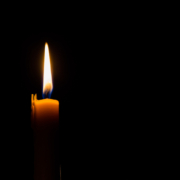Safe

In November 2018, I woke up to a normal Thursday. When I went to bed that night, the town of 20,000 in which I lived had been almost wiped off the map, swept away as if a willful giant had stomped through bent on nothing short of total devastation. A fire had burned the town away, destroying 90% of its structures, leaving charred skeletons where homes and businesses had stood. This was not a whole block lost. It was not a neighborhood. It was an entire town incinerated in a raging, apocalyptic spasm of wind and flame.
In the age of climate change, a town built in that semi-wild space called the “wildland/urban interface” can be especially susceptible to such devastation. Soon after the fire, vats of ink were spilled questioning the wisdom of allowing people to live in these areas, suggesting that the urban core was the safer option.
A year and a half later, the town’s burned rubble has been removed. Most of the giant, angular, coal black sculptures that used to be trees have been removed. Green grass has replaced black soot on the ground. Some areas of what remains of the town look downright normal.
Then, early in 2020, we began reading about a virus ravaging a Chinese province. It seemed far away, as distant to us as the fire that destroyed my town once seemed to most. Then the boundary-less virus settled here and spread its awesome wings, threatening everyone, felling us, killing us, exposing our lack of preparedness, and taking particular aim at our preeminent urban core: New York City.
Right now, living in an area where a single house sits on property that could accommodate a suburban block, this town that nature so recently savaged seems safer. But of course, today’s safe is tomorrow’s deadly. Fire, pandemic, flood, they choose their victims by their own strange calculus, and at the end of the day, the current situation reminds us that we can ever be entirely safe. That we can be reduced to grist for nature’s mill can shock our sense of dominant species status, but it’s a humbling notion to which it seems we’ll grow increasingly accustomed.
– Leonce Gaiter, Vice President, Content & Strategy








